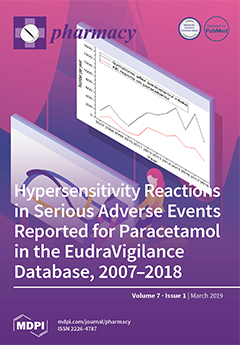On 1 December 2016, British Columbia’s (BC) provincial drug insurance program changed which medications in certain classes would benefit under the insurance program in an attempt to reduce expenditure. As part of the modernization, HMG-CoA reductase inhibitors (Statins), Angiotensin converting enzyme inhibitors (ACEI),
[...] Read more.
On 1 December 2016, British Columbia’s (BC) provincial drug insurance program changed which medications in certain classes would benefit under the insurance program in an attempt to reduce expenditure. As part of the modernization, HMG-CoA reductase inhibitors (Statins), Angiotensin converting enzyme inhibitors (ACEI), angiotensin receptor blockers (ARB), and dihydropyridine calcium channel blockers (CCB) were affected. Prescribers and pharmacists had six months to discuss the changes with patients, and change medications if deemed necessary.
Purpose: To quantify the changes made to prescriptions and to adjust to the Modernized Reference Drug Program.
Methods: A retrospective chart review was conducted at two clinics in Prince George, BC. Charts for patients that were prescribed any drugs in the affected classes were reviewed to determine if, and when, they had been changed, and by which health care professional. In December 2016, a clinical pharmacist, integrated within the study clinics, informed prescribers of the changes, and made patient-specific clinical notes within the charts. The notes described the changes and recommended alternative agents and appropriate dosing in order to assist the prescriber to have a conversation with the patient regarding the switch.
Results: Out of 429 unique patients, 233 patients were prescribed a Statin, 229 patients an ACEI, 110 an ARB and, 83 a CCB. Sixty-five drug changes were indicated to reflect the modernization, and with guidance from a clinical pharmacist, nurse practitioners (NPs), and family physicians (FPs), 65% of these identified drugs were switched to reflect the modernization. Community pharmacists made no drug changes in the study sample, despite the prescriptive authority and compensation available to do so. Province-wide, approximately 21% to 33% of affected drugs were switched during the same time-frame. Direct collaboration between a clinical pharmacist, working alongside NPs and FPs, was more successful in optimizing these medications when compared to standard practice, or community pharmacists alone.
Full article





